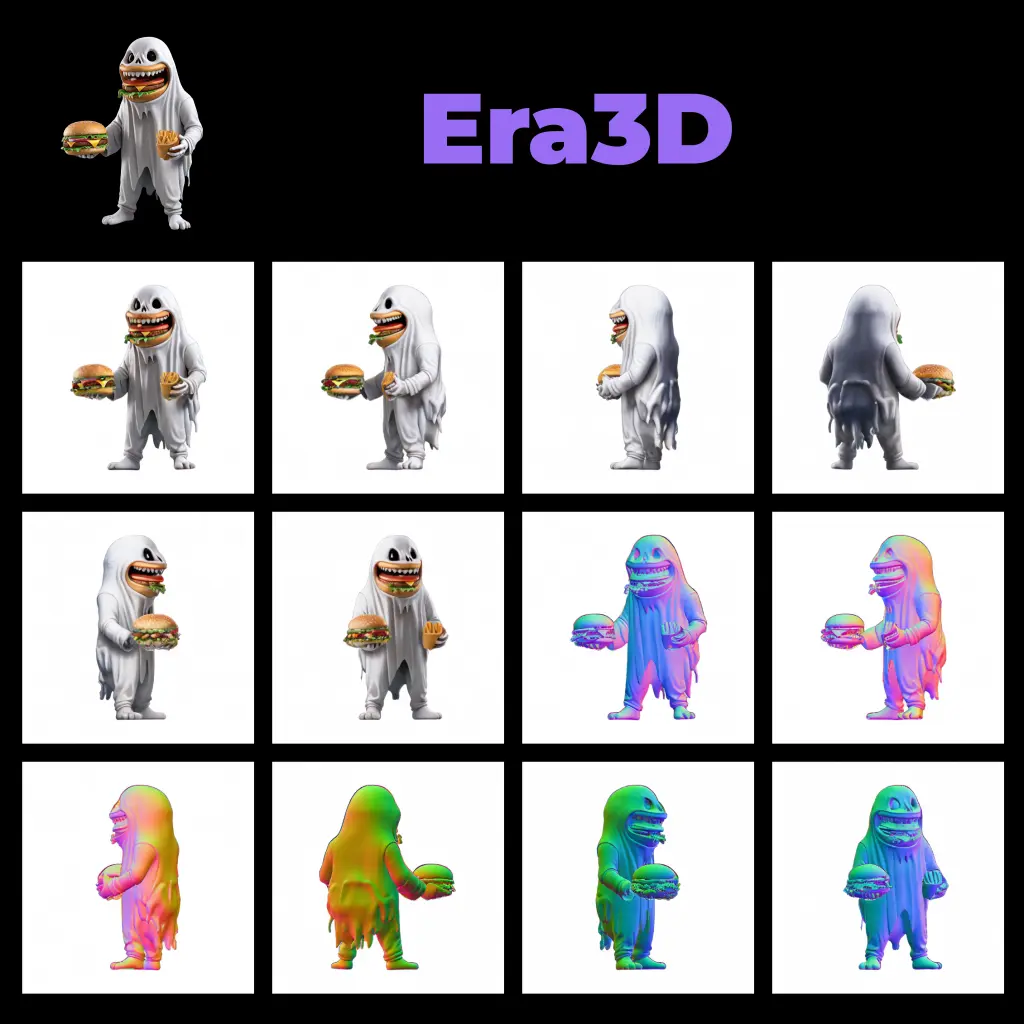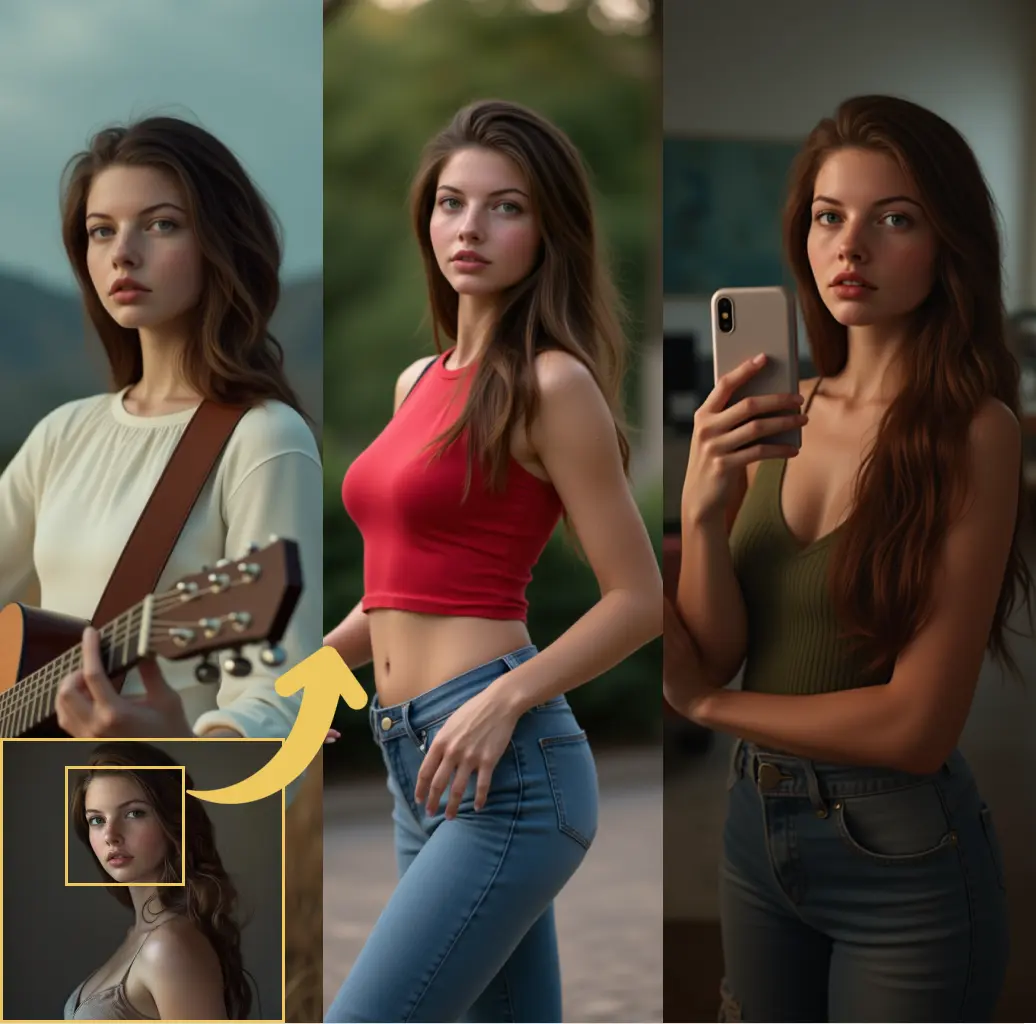ComfyUI Node: pipeKSampler
ttN pipeKSampler_v2
Category🌏 tinyterra/pipe
TinyTerra (Account age: 905days) Extension
ComfyUI_tinyterraNodes Latest Updated
2025-03-14 Github Stars
0.49K
How to Install ComfyUI_tinyterraNodes
Install this extension via the ComfyUI Manager by searching for ComfyUI_tinyterraNodes- 1. Click the Manager button in the main menu
- 2. Select Custom Nodes Manager button
- 3. Enter ComfyUI_tinyterraNodes in the search bar
Visit ComfyUI Online for ready-to-use ComfyUI environment
- Free trial available
- 16GB VRAM to 80GB VRAM GPU machines
- 400+ preloaded models/nodes
- Freedom to upload custom models/nodes
- 200+ ready-to-run workflows
- 100% private workspace with up to 200GB storage
- Dedicated Support
pipeKSampler Description
Advanced image sampling and processing node for AI art generation with noise addition, upscaling, and embedding workflows.
pipeKSampler:
The ttN pipeKSampler_v2 node is designed to facilitate advanced image sampling and processing within the AI art generation pipeline. This node integrates various functionalities such as noise addition, upscaling, and embedding workflows, making it a versatile tool for generating high-quality images. It allows for fine-tuning through parameters like LoRA (Low-Rank Adaptation) strength, noise control, and denoising steps, providing you with the flexibility to achieve the desired artistic effects. The node is particularly beneficial for artists looking to experiment with different sampling techniques and configurations to enhance their creative outputs.
pipeKSampler Input Parameters:
pipe
This parameter represents the initial pipeline configuration, including model settings and embeddings. It is essential for defining the starting point of the sampling process.
lora_name
Specifies the name of the LoRA model to be used. This model helps in adapting the base model to new tasks with minimal changes. If not provided, the default model is used.
lora_strength
Determines the strength of the LoRA model's influence on the sampling process. Higher values result in more significant adaptations. The typical range is from 0.0 to 1.0.
add_noise
Controls whether noise is added to the sampling process. Options are "enable" or "disable". Adding noise can help in generating more diverse outputs.
steps
Defines the number of steps for the sampling process. More steps generally lead to higher quality images but increase computation time. Typical values range from 10 to 1000.
cfg
The configuration parameter for controlling the classifier-free guidance scale. Higher values can lead to more vivid and detailed images. Common values range from 1.0 to 20.0.
sampler_name
Specifies the name of the sampling algorithm to be used. Different samplers can produce varying artistic effects.
scheduler
Defines the scheduling strategy for the sampling steps. This can impact the smoothness and quality of the generated images.
image_output
Determines how the output images are handled. Options include "Show", "Hide", and "Hide/Save".
save_prefix
A prefix for saving the output images, useful for organizing and identifying generated images.
file_type
Specifies the file format for saving the images, such as "png" or "jpg".
embed_workflow
Indicates whether to embed the workflow metadata into the output images. This can be useful for tracking and reproducing results.
noise
The noise level to be added during the sampling process. Higher values can lead to more abstract and varied outputs.
noise_seed
An optional seed value for the noise generation, ensuring reproducibility of the results.
optional_model
Allows specifying an alternative model for the sampling process.
optional_positive
Optional positive embeddings to guide the sampling process.
optional_negative
Optional negative embeddings to guide the sampling process.
optional_latent
An optional latent space representation to start the sampling process from.
optional_vae
An optional Variational Autoencoder (VAE) model for decoding the latent space.
optional_clip
An optional CLIP model for text-to-image guidance.
input_image_override
Allows providing an initial image to override the default starting point of the sampling process.
adv_xyPlot
Advanced XY plot settings for visualizing the sampling process.
upscale_method
Specifies the method for upscaling the generated images, such as "nearest" or "bilinear".
upscale_model_name
The name of the model to be used for upscaling.
factor
The upscaling factor, determining how much the image size is increased.
rescale
Rescaling settings for adjusting the image dimensions.
percent
Percentage-based scaling for the image dimensions.
width
The desired width of the output image.
height
The desired height of the output image.
longer_side
Specifies the length of the longer side of the output image, maintaining aspect ratio.
crop
Settings for cropping the output image.
prompt
Text prompt to guide the image generation process.
extra_pnginfo
Additional metadata to be embedded in the PNG output files.
my_unique_id
A unique identifier for the sampling process, useful for tracking and managing multiple runs.
start_at_step
Specifies the step at which to start the sampling process.
end_at_step
Specifies the step at which to end the sampling process.
return_with_leftover_noise
Determines whether to return the image with leftover noise. Options are "enable" or "disable".
pipeKSampler Output Parameters:
results
The final generated images, processed according to the specified parameters and settings.
pipe_line
The updated pipeline configuration after the sampling process, including model settings and embeddings.
pipeKSampler Usage Tips:
- Experiment with different
lora_strengthvalues to see how the LoRA model influences the output. - Use the
add_noiseparameter to introduce variability and creativity in your images. - Adjust the
stepsparameter to balance between image quality and computation time. - Utilize the
upscale_methodandfactorto enhance the resolution of your final images.
pipeKSampler Common Errors and Solutions:
"Invalid lora_name provided"
- Explanation: The specified LoRA model name does not exist or is not accessible.
- Solution: Ensure that the
lora_nameis correct and the model is available in the specified directory.
"Noise seed must be an integer"
- Explanation: The
noise_seedparameter is not an integer. - Solution: Provide a valid integer value for the
noise_seedparameter to ensure reproducibility.
"Unsupported file type"
- Explanation: The specified
file_typeis not supported for saving images. - Solution: Use a supported file type such as "png" or "jpg" for the
file_typeparameter.
pipeKSampler Related Nodes
RunComfy is the premier ComfyUI platform, offering ComfyUI online environment and services, along with ComfyUI workflows featuring stunning visuals. RunComfy also provides AI Playground, enabling artists to harness the latest AI tools to create incredible art.



